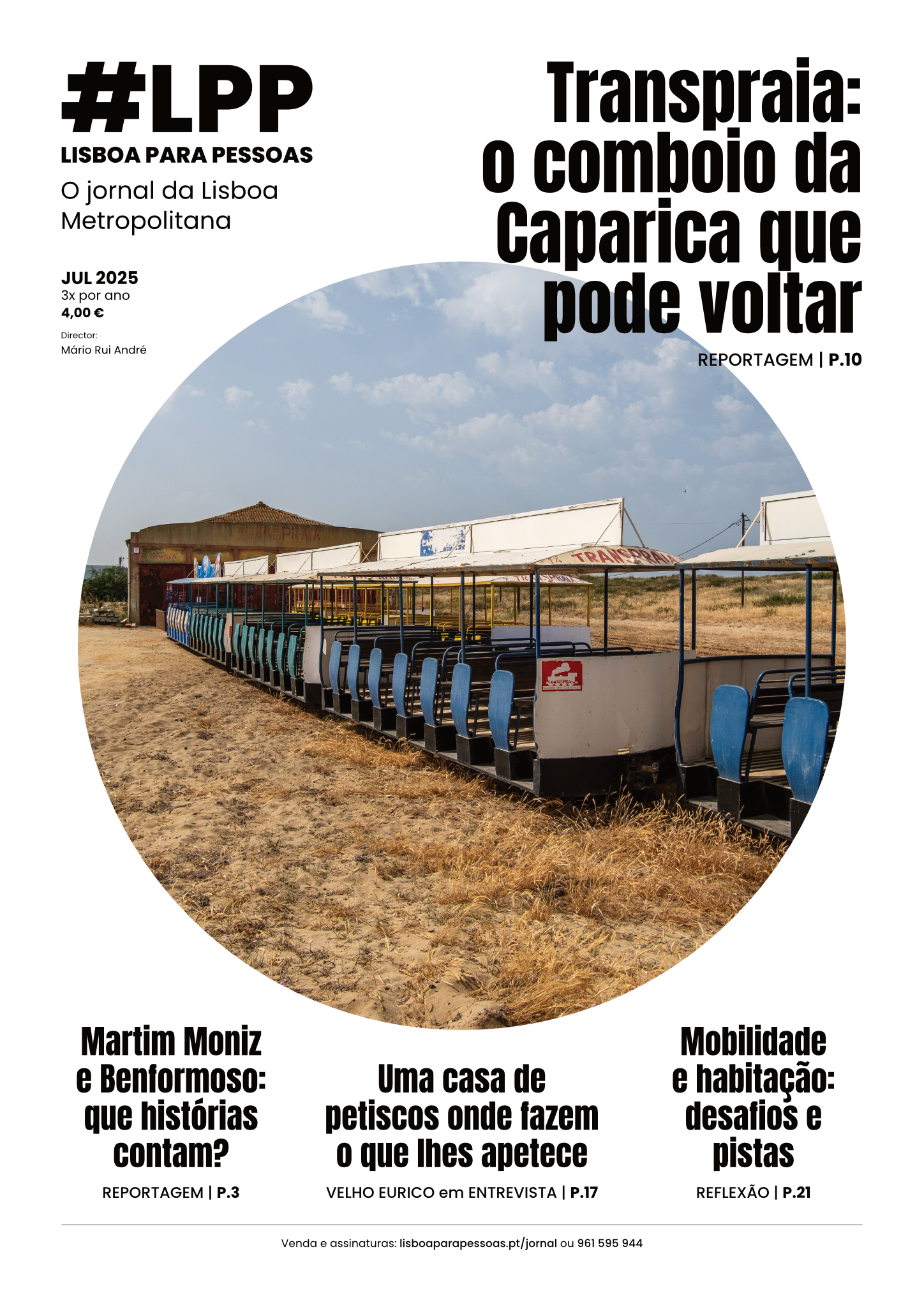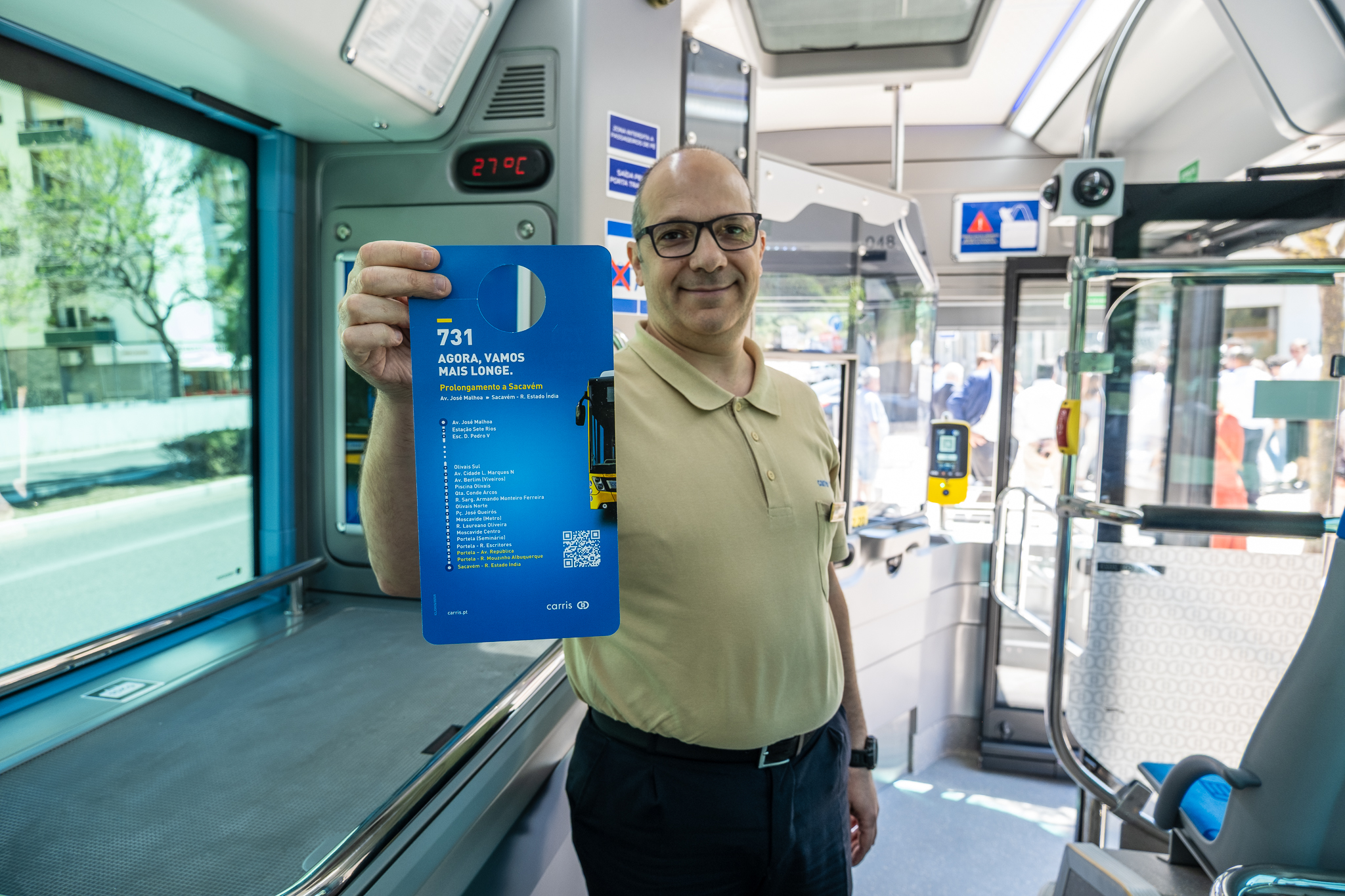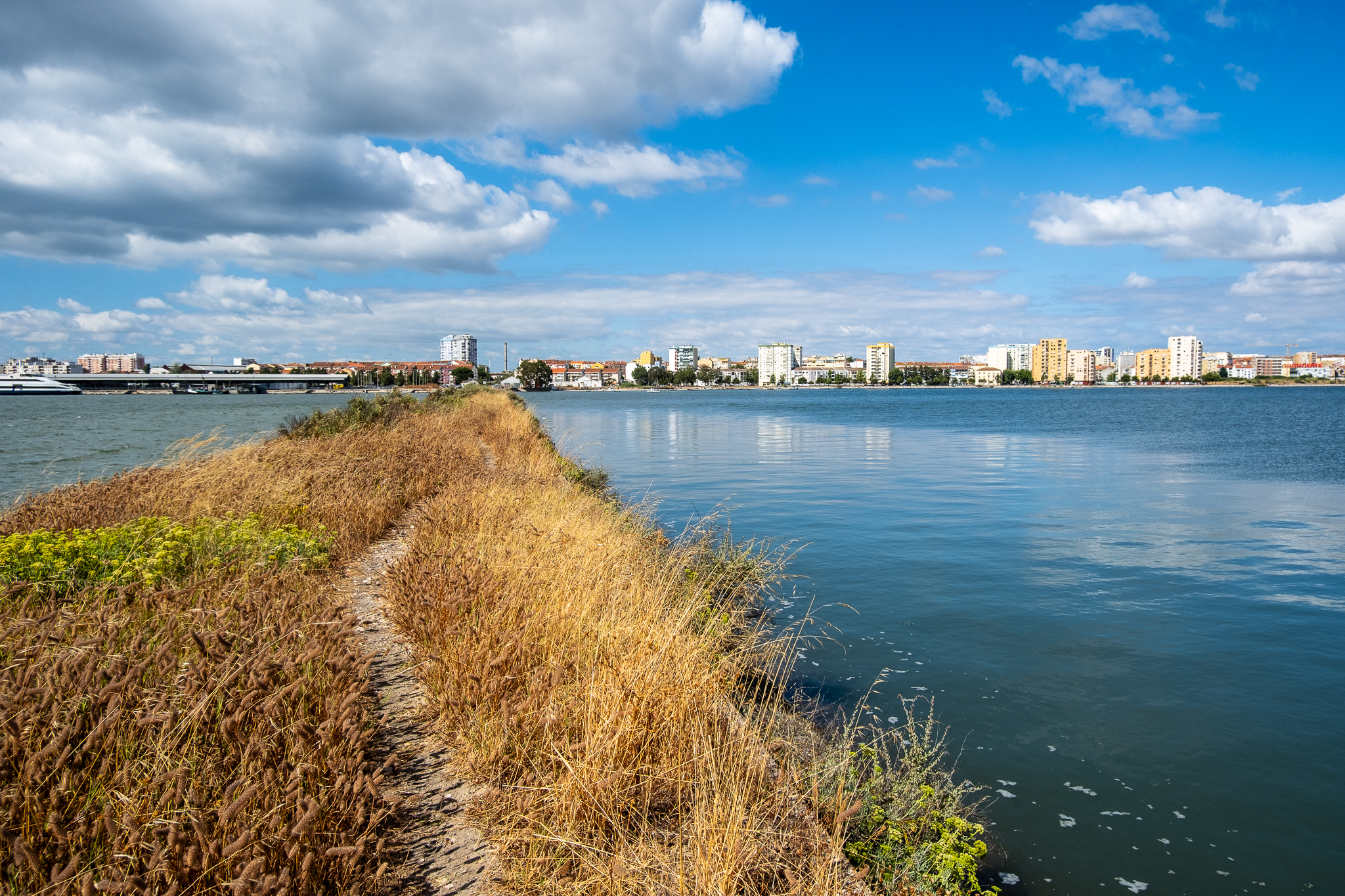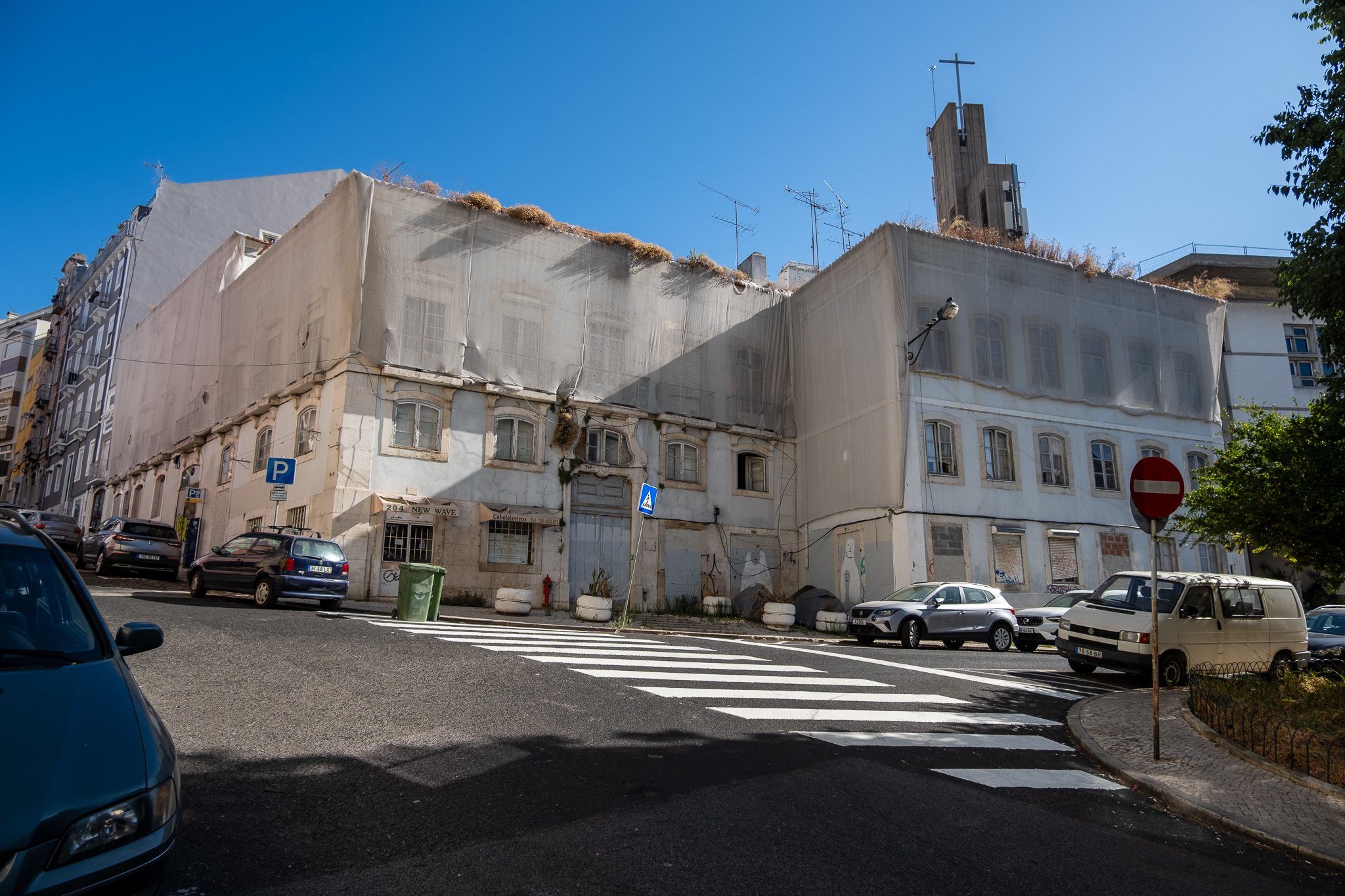Opinion.
The Vale de Santo António is a valuable resource for the city's livable future.

Imagine a huge space - 48 hectares - abandoned for decades in the middle of the city. Imagine that it's a space that has the potential to make Lisbon a much more liveable city, not only in the present, but also for future generations.
What would your ideas be?
Lisbon City Council classifies the mega-urbanization project as the "the city's largest urban redevelopment operation, after Expo 98 and Alta de Lisboa". The plan involves the construction of around 2,400 houses. The project is supposedly part of the Affordable IncomeBut the question has been raised as to whether, on the contrary, it will contribute to speculation and the construction of more luxury apartments.
We believe that the current Vale de Santo António project is a 20th century solution to the challenges of the 21st century. So it's time to ask ourselves: how can we transform this space for people now, but also for future generations?

Why an alternative consultation?
We launched the challenge of this surveybecause we believe that there needs to be a real consultation on the future of the Vale de Santo António. Our aim is to stimulate people's imagination and inform institutional thinking.
Our argument is based on the fact that no one has taken a step back and asked themselves whether a proposal that has been resurrected repeatedly over the last few decades is the best answer to the challenges the city faces now and will face in the future.
There were several public consultations, but they were limited. The results of the last consultation held in 2020for example, have never been published. We therefore propose a more dynamic and transparent process. Instead of replicating the usual public consultation 'rubber stamping' process, which doesn't give people the chance to question the main principles, we decided to ask deeper questions and proactively reach out to a much wider audience.

How long has this project been in the pipeline?
This project has a long and troubled history.
Large-scale construction in the Vale de Santo António has been contemplated as a possibility for at least half a century. Already Lisbon Public Urbanization Company (now defunct) planned to build six towers and 50 small collective buildings as part of the Vale Escuro Urbanization Plan in the 1970s. The project was never fully realized. Since then, the plans have been changed several times and, all the while, the area has been totally neglected.

Is it problematic to build on this type of land?
A lot. Of all the sites selected by the Renda Acessível program, Vale de Santo António is the most difficult to build on, as it is unsuitable for this type - and scale - of construction. Firstly, because it has a steep slope and is classified as one of the city's hilly areas. Secondly, because the soil of the Santo António valley is composed of various deposits of clay and sand, where it is more difficult to build. maximum seismic risk zone.
And could all the empty houses in Lisbon be part of the solution?
If the intention was really to create affordable housing in a realistic timeframe, we think so. According to credible sources, the Vale de Santo António project could cost the taxpayer billion and take decades to implement.
The city has no shortage of housing stock, with an impressive estimate of 48 000 empty or abandoned houses, for a total of 730,000 homes in the country. And it is estimated that 2,000 of these houses are owned by CML itself.
We can illustrate the problem just by talking about the two parishes along the valley:
- It is estimated that 20% of the houses in São Vicente, with a population of 14,000, are empty or abandoned: 2 438 according to the 2021 census.
- Penha de França, with an estimated population of 17,691, has around 2,900 empty or abandoned houses, one of the highest absolute numbers in the city (also according to the 2021 census).
The housing problem has been complicated by the various cases in which public property with great housing potential has been sold or given away for tourism and real estate projects. O Graça Barracks and the Navy Hospital are pertinent examples of this, both located near the Valley area.
This logic is replicated on private land where large projects are licensed that occupy large areas in the two parishes of the Valley, to be sold at prices that are incompatible with the salaries practiced in Portugal. Together, these phenomena diminish our options when it comes to planning urban space and solving the housing crisis.
But doesn't it seem crazy to build new houses next to so many empty ones? Does it seem right to put real estate speculation, the sale of public assets, disputes between heirs or unscrupulous landlords ahead of the common good? Wouldn't it be preferable to create incentives that facilitate the rehabilitation of empty properties in the heart of neighbourhoods that urgently need revitalization?
We therefore believe that it is completely sensible to investigate intelligent and pragmatic solutions to create housing for people, where that housing is needed, as it would reverse the degradation of neighborhoods across the city and create demand for skilled jobs.
In addition, we need to avoid releasing large amounts of carbon ("embodied carbon") that are associated with the process of new construction - an increasingly decisive factor in urban planning in the rest of Europe.
This is not to say that this will be a simple solution. But with more and better tools and incentives - like some that already exist - renovation projects will quickly bring more benefits and far fewer disadvantages.

What are the possibilities for this space?
Imagine for a minute that this project didn't exist. What would you, as a citizen of Lisbon, like to see implemented? More space for children to play? For the elderly to enjoy? More trees to provide a natural coolinga valuable mitigation measure against the heat islands (especially the area around the street Morais Soares/Alto de São João)?
We believe that we have the opportunity and the obligation to choose a model of urban development that will lead us to a future in which people really want to live.
To be clear, the current project includes a park, but this is dependent on a project whose implementation will take years. And we believe there is no time to lose.
In any case, what the city of Lisbon needs is a "natural infrastructure" that produces a generally greater return on investment in terms of people's well-being and protecting the city from the effects potentially devastating effects of climate change.
Lisbon has already committed itself, for example, to being one of the 100 European cities that will reach the target of zero net emissions by 2030. It has also committed itself to the goal that 90% of the population will be less than 300 meters from a green space with more than 2,000 m2by 2030.
These are great and laudable objectives, but they are not compatible with construction projects of this scale.
There are already some positive examples in the city of development that is more forward-thinking, which are taking place all over the city, such as the recently announced expansion of the Vale da Montanha Parkor the construction of Snail GardenThis is a space that was originally intended to be a parking lot and whose plan was changed under the participatory budget in 2016. It's important to note here that the parishes of São Vicente and Penha de França, which cover the Vale de Santo António, are among those with the smallest area of green space per inhabitant.
With Vale de Santo António, CML could become a leader in the European trend of reimagining urban spaces in a more resilient way, such as the Turia Gardens in Valencia; the Green axes Barcelona; the Broadmarsh in Nottingham; the Städte wagen Wildnis in Hanover, Frankfurt and Dessau.
These are just a few of the inspiring examples where residents have been able to participate and answer the question: what do the city and the people really need?
How to answer the survey
You can access the survey together with an explanatory note via from this link. There is also a version of the survey available in English here.
It takes less than 5 minutes to fill in and is anonymous.
O survey will run until Tuesday, October 31st (World Cities Day).
How we will use the results of this survey
We will use the results of this survey throughout the communication and discussions that will take place with the interested parties, in particular the Lisbon City Council and the Regional Coordination and Development CommissionThese are the two bodies directly involved in the development of the project.
Finally, we will use the results of this survey to give support and density to the response to the request for public consultation, the date and format of which are yet to be determined.
Tell us what you think
This is our perspective. At the same time, we recognize the importance of involving a greater number of people in the consultation process and that more information is needed about the inhabitants' wishes for this part of the city.
We would like to receive comments, criticisms and alternative proposals. After completing the survey, you can contact us via the e-mail address at the end.
Who is responsible for this survey?
The initiative was launched by a group of Lisbon residents who are concerned about this issue:
- Hugo Warner, circular economy expert
- João Baia, sociologist and anthropologist
- António Mota, statistician
- Ana Filipa Oliveira, specialist in communication and social advocacy.






